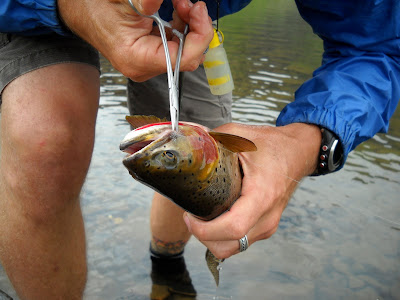
Fall's sweet treat ripening
If your reading this last post, you're either my mom, brother, distant co-worker, or a hapless google traveler who likes fresh food grown in the southwest. Sorry, but this blog ended in mid-August.
There was no reason in particular; but I guess everything in general- restrictive free wifi being most notable. My garden kept growing, I kept selling to customers who became my friends long before the final market, and many, many local food developments continued to blossom beneath the radar of the www.

September harvested Brussel Sprouts long before their frost-induced sweet prime; harvest hindsight is 20/20 ish
Before I sign off from Black Diamond Canyon Kitchen, here's a bunch of the local food developments I'd thought about posting, but didn't. They include the constant improvement/refinement of the Ramah area local-food juggernaut (bee and fruit tree workshops, harvest festival, multiple organic beef, lamb, poultry, and dairy producers- read the Ramah Farmers' Market Beet publication!), Gallup's Walk in Beauty CSA biggest season yet, Steve Heil's organic Navajo Tea available at the Co-op, the new local meat packing plant north of Gallup, abundant winter produce grown by Tom Kazmarek at the Community Food Pantry's 3 hoop houses, and so much more! And not to over-look the garden at my school produced over 250 lbs. of green cabbage, and we made the front page of the local paper again with kids smiling over their own huge vegetables. The cabbage, along with potatoes and onions played a role in 10 school lunches for 420 students!
There is so much 'local food' stuff going on in and around the Zuni Mountains!! Alas, though, I'm not the person to write about this stuff and post it on the web. It's all fascinating, and so many people in this region could benefit solely from the knowledge of all these disparate food-growing efforts, but I need to focus my efforts inward for a while, and so this is the last post of the Black Diamond Canyon Kitchen. While I had originally intended to focus this blog on the greater local-food scene, it ended up focusing on my growing and sustainable/season-extending tricks of growing in the high southwest. So, here's a wrap up of how my garden faired.
The market week following my last post was the high-point of the growing season. By my estimates, more than a thousand dollars worth of produce were sold (or distributed: CSA) at the Gallup Farmers' Market that morning. The market had 11 vendors and my stand (a full subaru wagon load) brought me more than $230! For the rest of the season, my sales and the number of customers at the market steadily decreased as the growing and market season gradually wound down, ending on October 9. The second to last week of the market I remember four of us growers, tables half-filled with produce at 10:30, standing alone in an empty downtown walkway; Gallup's farmers' market needs more customers!!!
This 'La Nina' winter brought us an extra month of the fall growing season, and maybe more in my warm canyon on the north side of town, and as I write this I still have produce in the ground. The numerous frosts and freezes (down to 10.5 at the lowest; tomorrow will dive into negative numbers) have produced absolutely the sweetest collard greens (bitter in summer, like candy in winter), brussel sprouts, and carrots. Green onions and August planted carrots continue to grow under row covers and uncovered arugula proved the hardiest fresh green of the fall- resisting even the hardest freezes and only finally succumbing to the blades of the tiller this morning. Other than the over-wintering onions and carrots, the memory of the 2010 harvest persists in my chest-freezer and 50 quarts of tomatoes and various pickles on the pantry shelves. The end of Black Diamond Canyon Kitchen.
Black Diamond Canyon Farm. I'm opening a bank account for the farm on Friday and all the garden beds have been amended with the 14 cubic yards of manure I bought and tilled in this fall (Then most beds were planted with cover cropping (nitrogen fixing and humus building) 'green manures' of clover, rye, and hairy vetch). Three long rows were planted with 550 onion transplants to over-winter in my east field, and the backyard of the foreclosed trailer-house at 318 Black Diamond Canyon became my garlic trials garden with 2500 cloves planted in 6, 50' rows representing 12 varieties of hard and soft-neck garlic. My remaining winter projects include building a small 8 x 25' green-house and completing the paperwork for becoming a 'registered' organic farm in New Mexico.
So, in the end, I owe and enormous thank you to everyone who read my blog and all the supportive and constructive feedback I've received from the first post to the last; I've enjoyed writing every word of it. I mean it, thanks! Sorry to those readers who felt disappointed by my inconsistent posting. I hope to improve the consistency and depth of my postings as I morph the 'kitchen' blog into the blog of my Black Diamond Canyon Farm. Thanks for reading, and more over, thanks for eating my food. -Kevin
























































